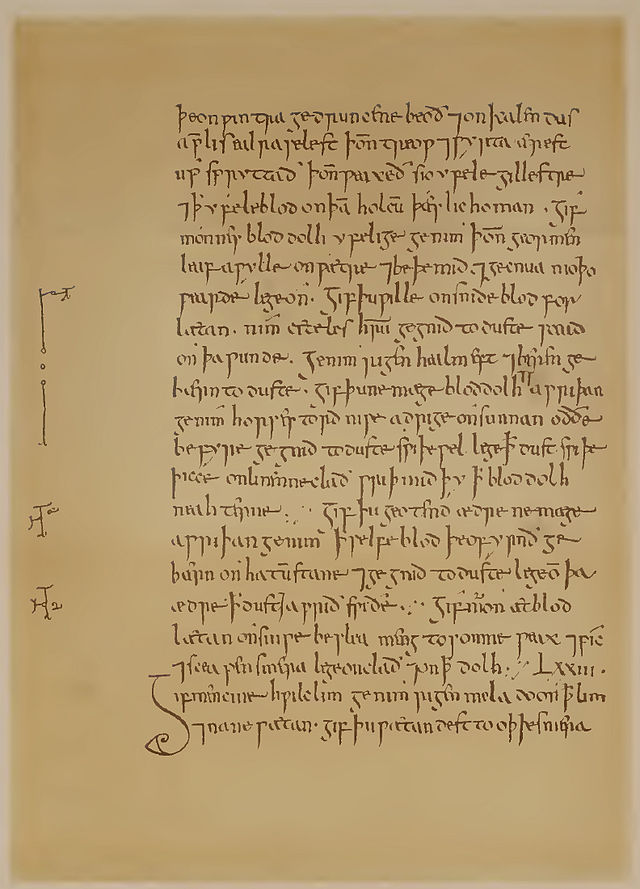【醫學趣聞】老祖宗的偏方殺死多重抗藥菌
■現代醫學常常對於某些偏方不屑一顧,不過最近諾丁漢大學(University of Nottingham) 微生物學家哈里森博士(Freya Harrison)決定要來試試看記載於九世紀書中的古方,結果發現竟然可以殺死多重抗藥菌。

撰文|葉綠舒
這本書,Bald's Leechbook,裡面有個用來治療睫毛毛根感染的方子。這藥方是這麼製作的:
「將等量的韭菜與大蒜混合後搗碎,加入公牛膽與酒在銅鍋中烹煮九天。」
研究人員發現,要重現古方其實也不容易;雖然現在也有韭菜與大蒜,但因育種技術的先進,現代的韭菜與大蒜早已跟九世紀的品系有所不同;即使研究人員找到了所謂的「傳統」(heritage)品種,他們仍擔心不一樣。
公牛膽倒是比較容易,很多化學藥劑公司都販售膽鹽;最後一個問題是銅鍋。銅鍋非常貴,因此哈里森博士決定把整個配方在玻璃器品中烹煮九天,但加入銅片同煮。
九天後配方完成。哈里森博士說,烹煮過程中實驗室充滿了大蒜味道,這讓附近的人都以為他們在實驗室裡煮東西吃;九天結束時,藥膏散發著恐怖的味道。不過,哈森博士發現它不但能殺死土壤中的細菌。更好的是,它可以治療被多重抗藥性金黃葡萄球菌感染的老鼠,效果與萬古黴素(Vancomycin)相當。
當然,接下來的工作就是要了解為何這古方有效。2005年有另一個研究團隊嘗試過同樣的方子,但沒有任何效用。唯一的差別是他們沒有烹煮九天,且單獨使用任何一個成分也都不具效果。
2015/10/10 更正:
由於當初只有參考文獻1中的文字可供參考,而New Scientist 使用了stewing這個詞,使筆者誤以為是「將等量的韭菜與大蒜混合後搗碎,加入公牛膽與酒在銅鍋中烹煮九天。」;本文中的研究於2015/8出版於mBio期刊(2),參考其中的方法發現,正確的製備過程是「將等量的韭菜與大蒜混合後搗碎,加入公牛膽與酒在銅鍋中置放九天。」。特此更正。
參考文獻:
1. Clare Wilson. 2015/3/30. Anglo Saxon remedy kills hospital superbug MRSA. New Scientist.
2.Harrison et al. (2015) A 1,000-year-old antimicrobial remedy with antistaphylococcal activity. mBio 6(4):e01129- 15. doi:10.1128/mBio.01129-15
--
作者:葉綠舒 慈濟大學生命科學系助理教授,科教中心特約寫手,從事科普文章寫作。

中記述:將等量的韭菜與大蒜混合後搗碎,加入公牛膽與酒在銅鍋中烹煮九天
原文:(bullocks gall), mix with the (leek)… let it stand nine days in the (brass) vessel
bullocks gall:經閹割的公牛膽汁,leek:韭蔥(蔥屬植物,形狀介於中國蒜苗與韭菜之間),brass:黃銅(是種銅、鋅合金)
這只是相互切磋,請公開、勿隱藏。
另外,文中記述:九天後配方完成。哈里森博士說,烹煮過程中實驗室充滿了大蒜味道,這讓附近的人都以為他們在實驗室裡煮東西吃;九天結束時,藥膏散發著恐怖的味道。
該種製劑轉變成一種令人噁心的惡臭黏液物,是2005年另一團隊嘗試重做該藥方,未能殺死培養皿中生長之細菌的失敗結果。而不是Harrison她們重做該處方,具殺菌作用的結果。請詳細參閱原文。
您好:
第一段有關植物種類的問題,因為各地對植物的俗稱各有不同,謝謝提供想法。
第二段意見您應是誤讀了,而且我們是理解文章後加以改寫,而非原文翻譯。
原文哪一段提到失敗的組沒有烹煮九天?
"With the nine-day waiting period, the preparation turned into a kind of loathsome, odorous slime,"
這邊一樣是說經過九天等待, 至於有沒有烹煮 文章內也沒有提到吧
因為Harrison們經熬煮九天的處方,那段原文中未提到產生恐怖的味道,不過以下的原文:
Using exactly the right method also seems to be crucial, says Harrison, as another group tried to recreate the remedy in 2005 and found that their potion failed to kill bacteria grown in a dish. "With the nine-day waiting period, the preparation turned into a kind of loathsome, odorous slime," says Michael Drout of Wheaton College in Norton, Massachusetts.
Harrison表示,確切使用正確方法似乎也至關重要。因為,2005年另一團隊嘗試過重做該藥方,不過發現其一次劑量未能殺死,於培養皿中生長的細菌。美國麻薩諸塞州諾頓市韋頓學院的Michael Drout宣稱:「隨著九天的等待期,該種製劑轉變成一種令人噁心的惡臭黏液物。」
不知Michael Drout的話,指的是2005年另一團隊嘗試的結果?還是Harrison們嘗試的結果?有點疑惑。
TO JKM 與 許東榮:
這古老配方:
"The remedy is as follows:
Make an eye salve for a stye: take cropleac ‘onion’ and garlic in equal amounts of both, pound well
together, take wine and bull’s gall equal amounts of both, mix with the ‘leeks’, then put in a brass
vessel, let stand for nine nights in the brass vessel, strain through a cloth and clear well, put in a
horn and about night time put on the eye with a feather; the best remedy. "
這段來自以下連結22頁,原配方敘述中沒提到要烹煮,這是2005年所使用的方法:放置九天。(那裡在說2005那個Drout團隊沒實驗出配方有效性。)
http://www.herlid.org.uk/uploads/3/1/0/0/3100057/3pct_-_anglo_saxon_leechcraft.pdf
新的(Harrison這組)有煮(STEW)在正文提供的連結內:
____________________↓
After nine days of stewing, the potion had killed all the soil bacteria introduced by the leek and garlic. "It was self-sterilising," says Harrison. "That was the first inkling that this crazy idea just might have some use."
(Anglo Saxon remedy kills hospital superbug MRSA. )